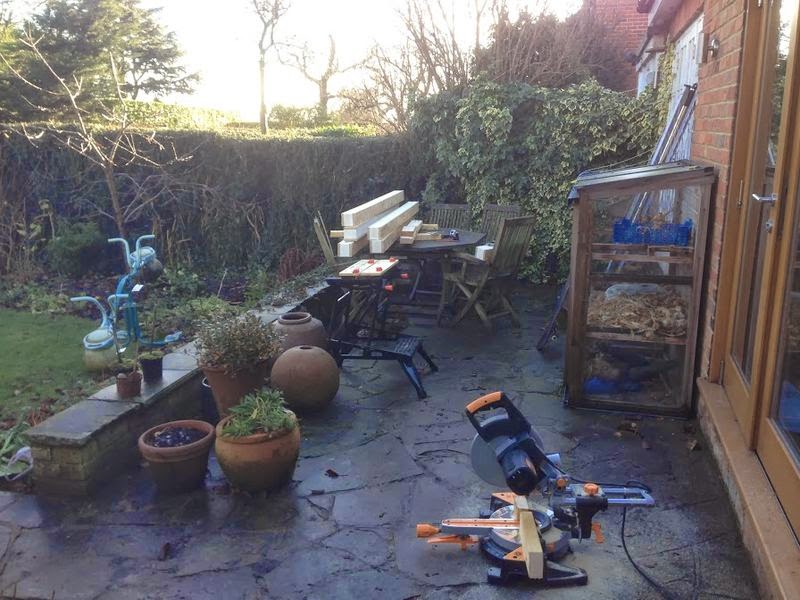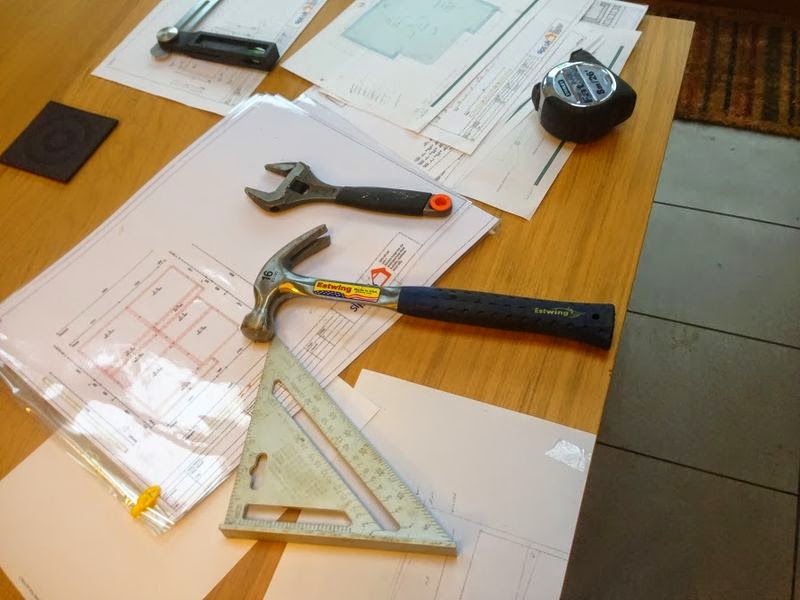we continue to enjoy rain and wind of biblical proportions, but I managed to get an hour or two on Saturday to cut the remaining osb splines.

The weather forecast looks grim for the near future so I have revised my plans and now will attempt to get the walls and roof up in one day, attach the waterproof membrane to the walls and sling a tarp on top until I get the next clear day to do the roof covering.
This ought to be just about possible, particularly as I will have some help in the form of my brother who is now in the country, but we could easily be held up by the odd ill fitting panel or spline. As a precaution I took the time to use an electric sander on the SIP splines to create a slight bevel on the OSB edges. I found out these are the tightest fit when I did the floor and with any luck the bevel will be enough to ease the initial part of the spline into the recess in the SIPs, after which it should be plain sailing (with the help of a mallet)
The splines had to be cut with with an angle to allow for the pitch of the roof, and I had the pleasure of once again using a ‘speed square’ to work out where the cuts should go.
Being a carpentry ignoramus I had never come across this tool before – I got it a few weeks ago thinking it would be very handy for marking 90 degree angles when doing the sub-frame (and indeed it was) – but I also found out, following a bit of googling, that it is a protractor.
You just place the square against a straight edge and pivot on the point marked ‘pivot’ to the required angle. Simple! This combined with a sliding bevel meant even a geometry dunderhead like myself had no problem with the angled pieces.

The tool was invented by Albert J Swanson, an American, in 1925, and also comes pre-marked with common pitches for roof rafters. Nice one Mr Swanson!